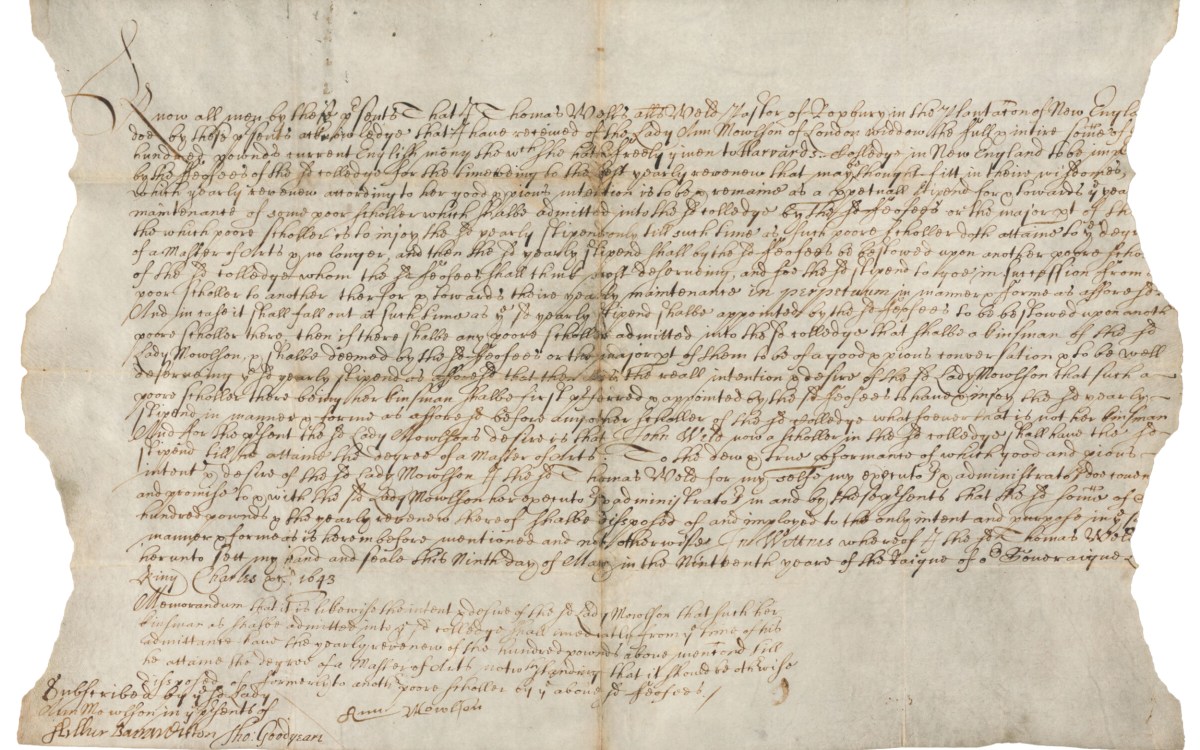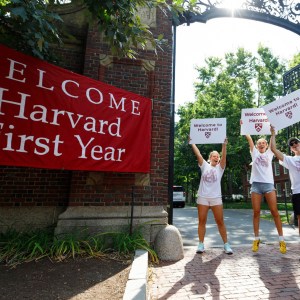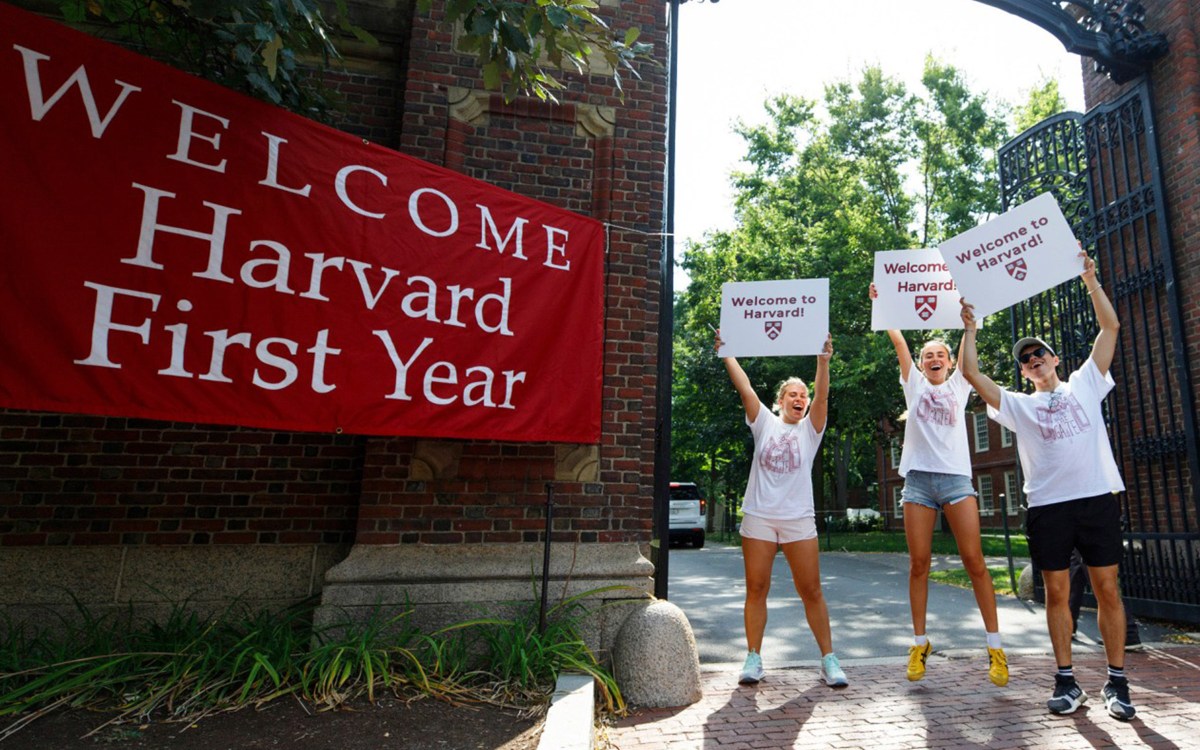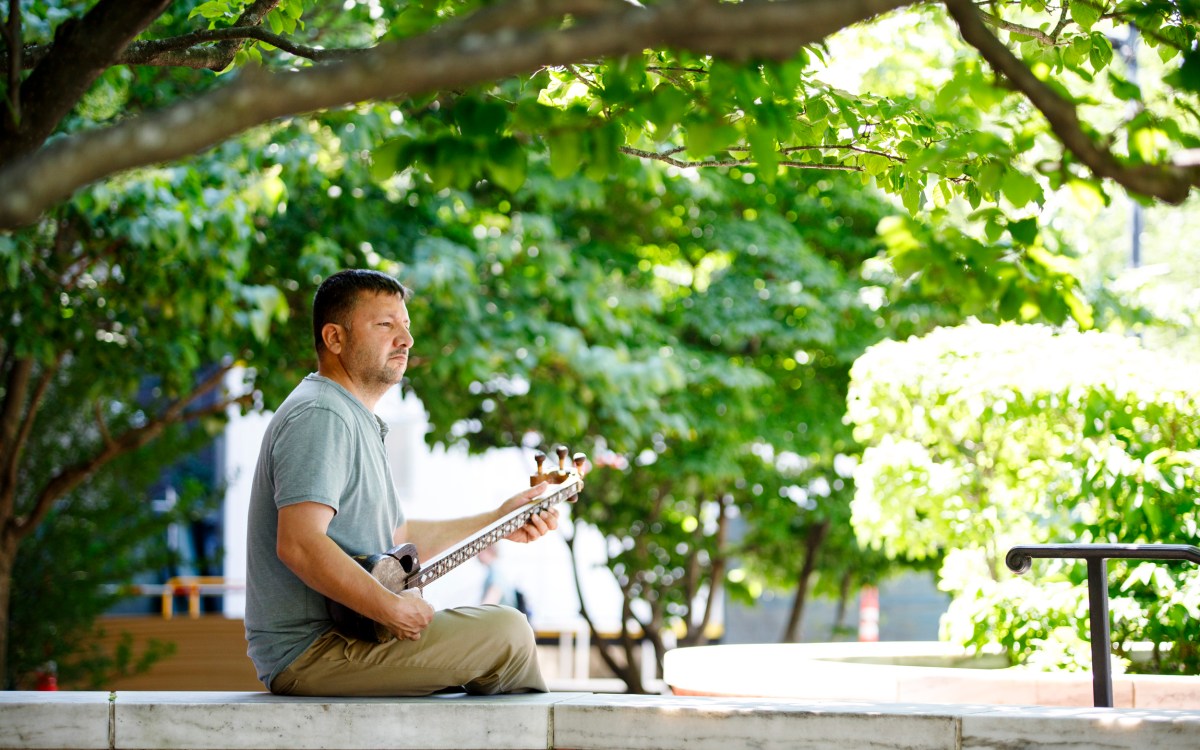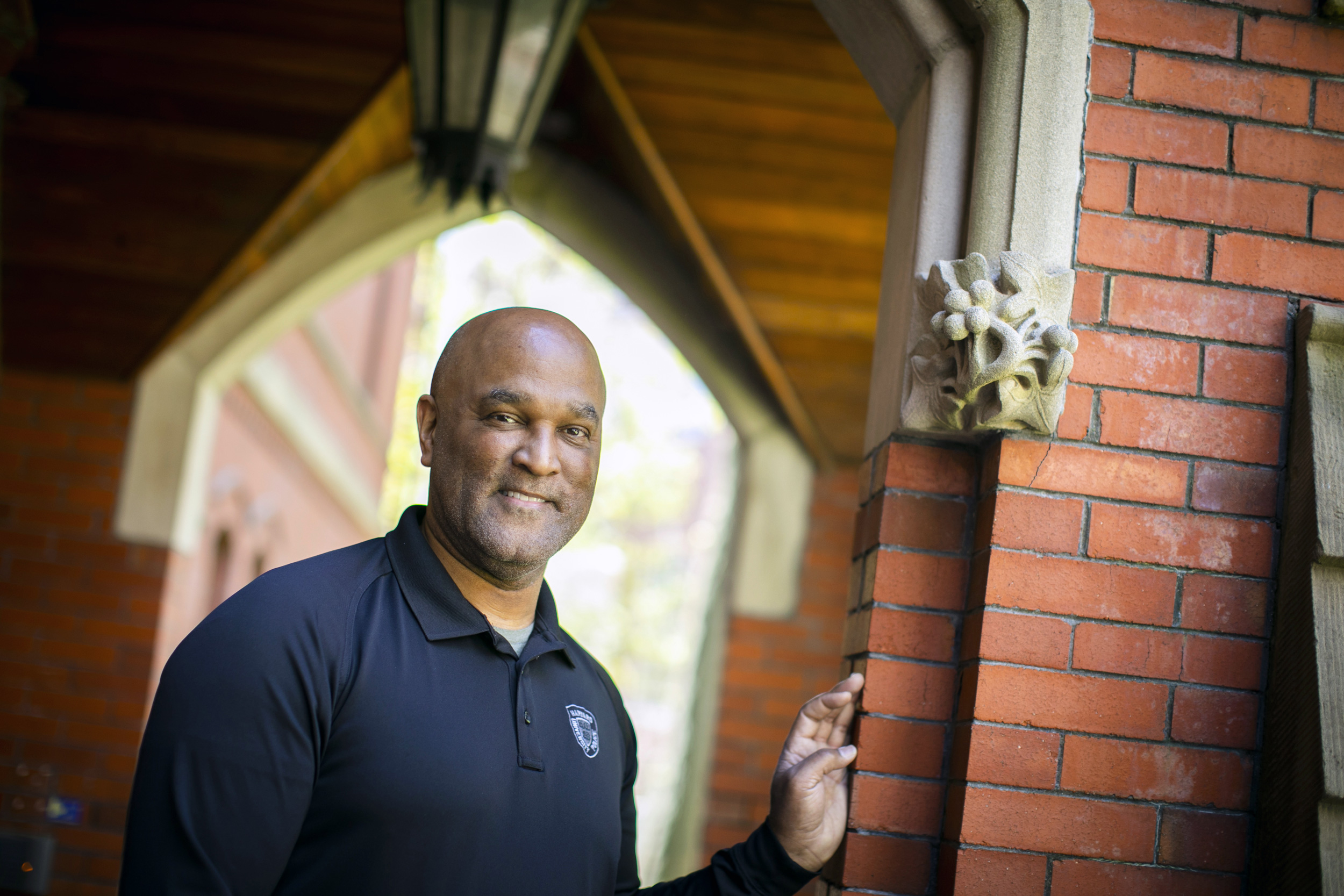
Onboard since July 2021, HUPD Chief Victor Clay says he wants to make sure the department is doing “not only the right things and finding ways to function more efficiently, but also being mindful to not tear things apart so much that we would need to reinvent the wheel.”
Stephanie Mitchell/Harvard Staff Photographer
Police chief recalls his first year of pandemic, progress
Victor Clay says department has made strides in accountability, transparency, diversity
Victor Clay came into his new role as chief of Harvard University Police Department (HUPD) with a full plate of priorities amid a raging pandemic. Clay was named to the post on April 27, 2021, and took over in July, about seven months after the University had released an independent review of the department and campus safety. Additionally, the fall of 2021 saw a more robust return to campus life with the return of all students, resumption of in-person classes, and other activities. The Gazette recently spoke with Clay as he reflected on the progress he’s made in his first year and where the department stands on other activities and priorities.
Q&A
Victor Clay
GAZETTE: It’s been about a year since you were named the chief of the Harvard University Police Department. Can you talk about some of the priorities you’ve identified, and changes undertaken in that time?
CLAY: I took considerable time reading through the assessment that was released following the independent review of HUPD. Patiently absorbing the assessment was beneficial because it helped me learn the culture and the needs of the department before making any impactful decisions. I wanted to make sure that we were doing not only the right things and finding ways to function more efficiently, but also being mindful to not tear things apart so much that we would need to reinvent the wheel. There are many good processes here at Harvard and HUPD, and I wanted to make sure we enhance those.
GAZETTE: Can you elaborate on some of those existing processes that are working well?
CLAY: One area is compliance process regarding the Clery Act, which is a federal law that requires colleges and universities to disclose annual information about campus crime. Our compliance folks do an outstanding job managing the mountain of data that we must capture to maintain Department of Education compliance. That is another one of the internal areas that I am pleased with and would not change or adjust in any way. They are detailed, focused, committed to accuracy and transparency, and dedicated. It’s a great system. This has also been a strength as we have moved forward work around the independent review recommendations related to transparency and data reporting. We’ve been able to take steps, like launching the public dashboard, from a solid foundation and process.
Training and professional development is another area of strength. What I find with a lot of law-enforcement training is that it is more focused on established law-enforcement techniques and trends, taught by law enforcement, and a lot of the time that doesn’t transfer well into the higher-education and non-law-enforcement areas. Here at Harvard, though, the Center for Workplace Development (CWD) offers Harvard University-provided professional development, which means we can receive training for personnel without sifting through outside training vendors. It also means that the information provided during the training will fit the ideas and expectations of the University. I think we receive a broader and more diverse perspective when using the CWD resources.
GAZETTE: And what are some priority areas for you where changes have been implemented?
CLAY: Regarding changes, we’ve taken some important steps to increase accountability within the department and community. One way we’ve done this has been partnering with Harvard Human Resources (HHR), to redesign the organizational structure. This included promoting four internal leaders to the rank of captain. HHR was instrumental in helping assess and narrow down a large pool of qualified candidates, and with the help of some external experts we selected the four best people for leadership positions from within HUPD. Additionally, we created three unique divisions within the department, providing more opportunities for specialization and promotion. This new structure also allows for more on-site and in-the-field supervision, which helps increase accountability.
Another area of focus for me has been developing a policy and procedure manual based on best practices at all levels of policing in the 21st century — local, state, and federal. I believe it’s important to incorporate what has been shown to work best from across the spectrum as opposed to focusing on a narrow scope of internal operations or from a single department perspective.
We also strive to make HUPD as diverse as the community it serves, across all levels of the organization. I believe having officers that are representative of the overall community adds to the legitimacy of our organization in the public sphere. We have worked with HHR to strengthen our recruiting channels so we can hire the best officers available, assessing them on their knowledge, skills, and ability, all while maintaining that commitment to diversity. Our recent hires showcase that intentional focus and the success we’ve had so far.
I’m particularly proud to say that we’ve recently invested in our fleet of vehicles and — with thanks to the Harvard University Green Revolving Fund — all of the vehicles are hybrid, in alignment with the University’s sustainability goals.
GAZETTE: You mentioned the 2020 independent review of HUPD, conducted by 21CP Solutions. A significant portion of the findings from that report focused on the interactions between HUPD and the community it serves. How have the findings in the final report helped guide decisions in the restructuring of HUPD as an organization, and what benefits will come from this restructuring?
CLAY: As I said, the assessment was a great roadmap because it provided interim goals along the way to be met at the same time as my own personal assessment of the department was underway. By design, some of the assessment findings were broad, and I had to translate them into operational objectives so that I could share [them] with the staff and make the suggested changes. Some were fairly easy to implement, for example the leadership model and accountability model. Internal Affairs processes such as complaint investigations and performance inquiries are now conducted with HR support and oversight versus being adjudicated internally. We also report all internal matters to the state as part of the Massachusetts police reform legislation that was made law in December 2020.
That legislation was important as well because it provided very specific rules to follow in order to be compliant, which in turn answered several suggestions in the assessment. All of this together made it a lot easier to move the department forward.
We are continually working to improve departmental training, one example being the introduction of de-escalation techniques. It’s important that we constantly seek ways to strengthen the department’s relationship with the community. That is a dynamic relationship that is ongoing and needs to be maintained on a regular basis. In that regard, we have adopted a training model focused on an officer’s learning capacity and problem-solving skills. I believe the PTO (Police Training Officer) program is a more compassion-based, community-focused, and service-oriented training model, as opposed to older models that rely on rote performance capabilities.
GAZETTE: What other findings from the assessment have you have considered when imagining ways that HUPD can more efficiently deliver on its values and mission?
CLAY: Soon we will launch Phase 2 of the HUPD dashboard, which will show complaints, use of force, and patrol activity data, in addition to the calls for service, crime, and arrest data that was released in 2021. This is a level of transparency that shows our commitment to accountability. We regularly engage with the newly formed HUPD Advisory Board for their input on initiatives like this one and others.
Right now, the process is underway to create a non-sworn service officer role position called a Campus Support Officer. We are envisioning the people hired for these positions will be able to respond to routine calls for service and take reports on things like property theft, lock-outs, and similar nonviolent situations that don’t necessarily require a sworn officer to show up.
Finally, I have been involved in a University-wide effort with a broad leadership team to help launch the “Reimagining Campus Community Safety” initiative at Harvard, another recommendation outlined in the report. This effort is a campus-wide conversation about reimagining safety at the University, and of course involves many more people and resources than just the HUPD. The first conversations took place as part of last month’s University-wide Equity, Diversity, Inclusion and Belonging Forum, and we are looking forward to hosting additional conversations in the future. There is also a survey in place to collect feedback from the community at any time.
GAZETTE: Anything else you would like to add as you reflect on your time here at Harvard?
CLAY: In closing, I’ll say that my personal philosophy is based on a quote from James Baldwin’s novel “Notes of a Native Son.” In it he wrote, “I love America more than any other country in this world, and, exactly for this reason, I insist on the right to criticize her perpetually.” I feel the same way about my career. It is [because of] my love for what I do and the huge responsibility that comes along with it, both morally and ethically, that I must continually strive to improve it, perpetually.
Read more about the Reimagining Campus Community Safety Initiative at https://campuscommunitysafety.harvard.edu/. All members of the Harvard community — students, faculty, staff, researchers, and visitors alike — are invited to provide feedback about their lived experience of the campus safety ecosystem at https://harvard.az1.qualtrics.com/jfe/form/SV_0NUUTOgVF8N8xoO.
